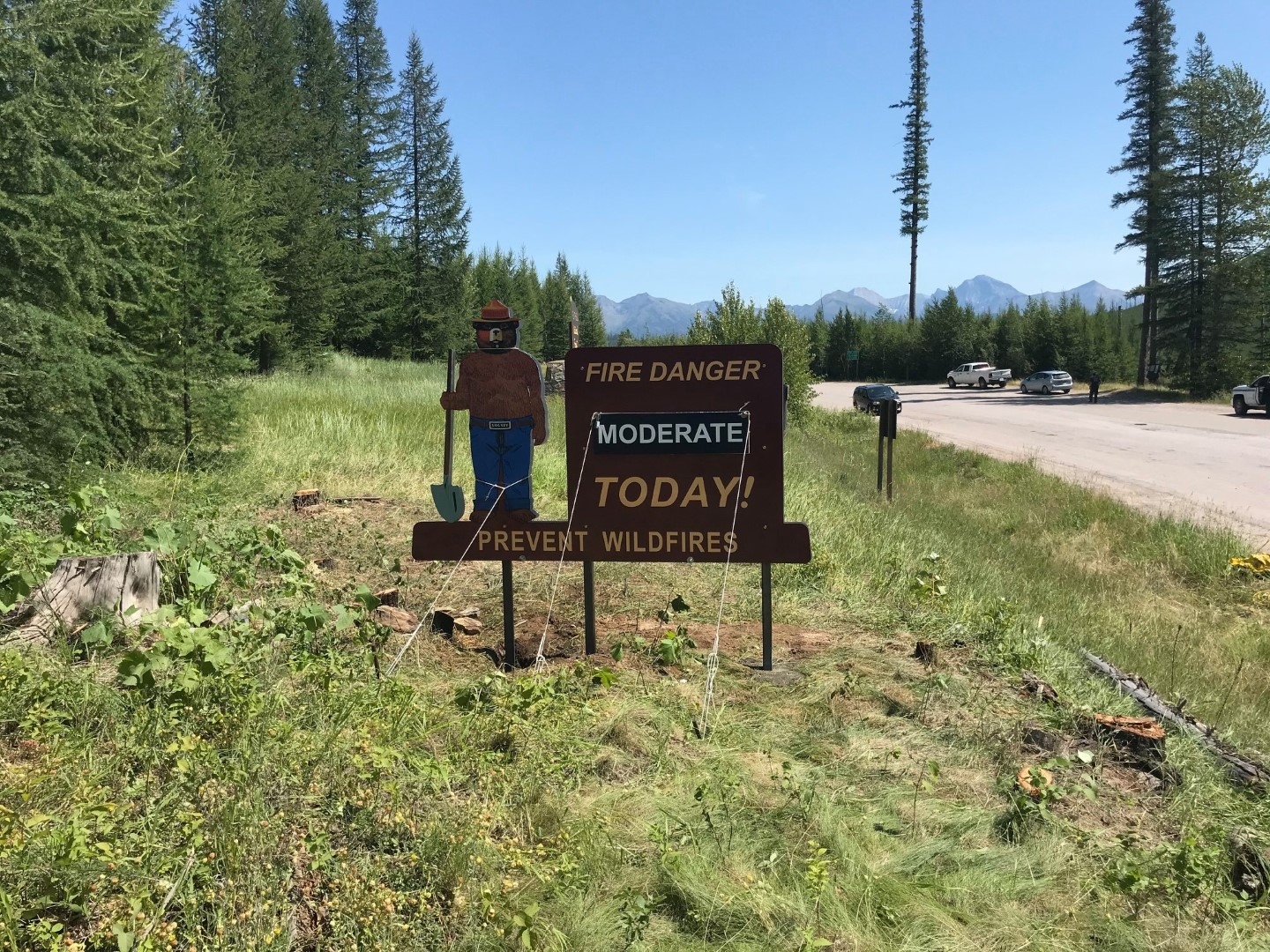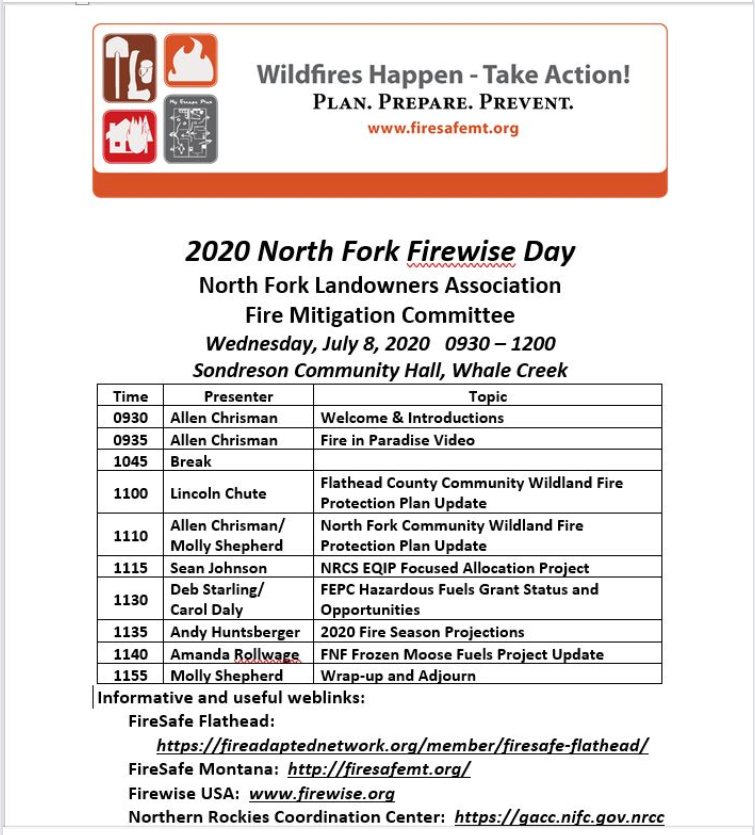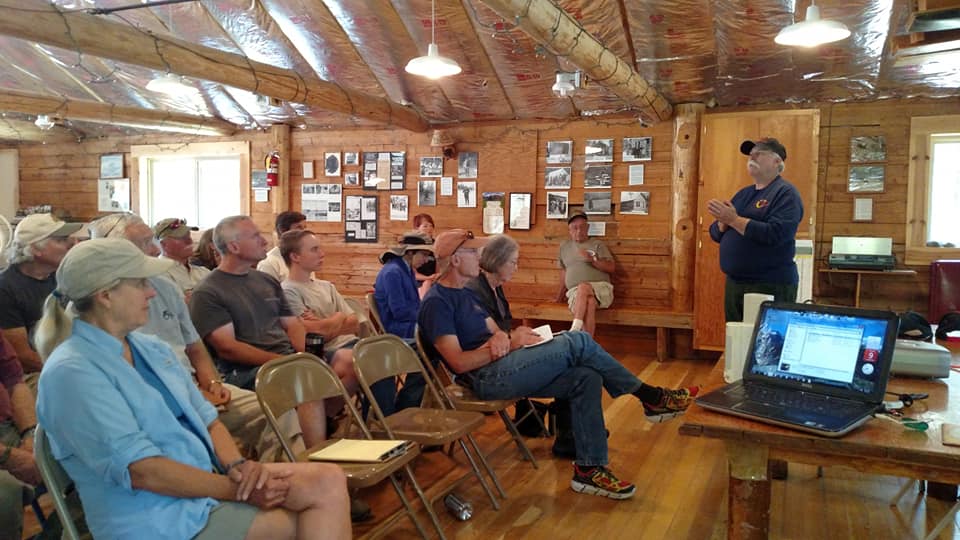Author: Allen Chrisman
Wildland Fire Potential Outlook – issued September 1, 2020
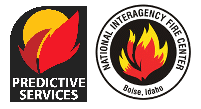 Well, there is Good News and Not as Good News in this Month’s Wildland Fire Potential Outlook!
Well, there is Good News and Not as Good News in this Month’s Wildland Fire Potential Outlook!
The Good News is that Montana is now not forecasted for an “Above Normal” September as it has been in the past two Outlooks.
The “Not as Good” News is that things are critically dry across the State. Energy Release Components, an indication of the volatility of the fuels, are in the 95th to 97th percentile, which is pretty much pegging the meter.
For the most part, we have avoided the large fires associated with these seasonally dry fuel conditions. I think the lack of numerous starts from dry lightning storms factors into the equation. And, as we move into September, the potential for dry thunderstorms drops off.
However, there are numerous other ways fires can start – most of them human. Three fires started earlier this week along Highway 200 outside of Plains/Paradise where a flat tire on a trailer sparked fires with the wheel contacting the pavement throwing sparks. Unattended campfires are always a concern – even transitioning out of the summer camping season into the fall hunting season with hunter fires.
So, continue to be careful out there. If we get some of the forecasted moisture alluded to in the narrative, we’ll get out of this fire season relatively intact. More time to work on fuels projects for next fire season! Only You….
https://www.nifc.gov/nicc/predictive/outlooks/monthly_seasonal_outlook.pdf
Wildland Fire Potential Outlook – issued August 1, 2020
 As expected, Northwest Montana continues to be projected as above normal for fire activity through August and September. We can all be glad that the moisture we got at the end of June and the first of July pushed our fire season out from becoming active in early to mid July.
As expected, Northwest Montana continues to be projected as above normal for fire activity through August and September. We can all be glad that the moisture we got at the end of June and the first of July pushed our fire season out from becoming active in early to mid July.
But, with the current temperatures, low overnight temperature and humidity recovery, and live fuels suffering due to the combination of those factors, we can become pretty volatile pretty quickly.
The other aspect of this Outlook indicates we will have enough moisture in the air masses pushing up from the 4 Corners area to stimulate convective activity – dry thunderstorms. So, we can wind up with a lot of new starts from lightning.
Probably not telling any of you anything you don’t know – but it is a good time to get those fire tools shaped up, tanks mounted in 4 wheelers, and watching the lightning maps.
Here is the link to the complete Wildland Fire Potential Outlook. As we have said before, these Outlooks are useful but there are no guarantees.
https://nflandowners.org/nflawp/wp-content/uploads/2020/08/August-monthly_seasonal_outlook.pdf
New Smokey Bear-Fire Danger sign at Camas intersection
Wildland Fire Potential Outlook – issued July1, 2020
The Current Wildland Fire Potential Outlook has been posted, and it refines the forecast for our fire season in Northwest Montana. We did see benefit from the significant moisture received over the past two weeks, so our season will be delayed until later in July. That is good news. But August and September are still forecast to be Above Normal Fire Activity for Northwest Montana.
Here is the important stuff for the Northern Rockies:
“Normal fire potential is now anticipated to continue through most of July due to the recent passage of moist, Pacific troughs and beneficial precipitation in the latter half of June and forecast to continue in a weaker version by various CPC outlooks into the middle of the month. In late July and August, Above Normal significant wildland fire potential is anticipated to develop in all the Western PSAs 01-09 and expand eastward into central and southeastern Montana, possibly as far east as western North Dakota. One reason is the predicted monsoonal lightning pattern which could be robust under a strong ridge of high pressure during that time with above average potential lightning ignitions in dry fuel beds. Above Normal potential will continue for those same areas in September with the outlooks calling for warmer and drier than average conditions.”
August and September will be busy for us. Be prepared!
Here is the link for the entire report: https://www.nifc.gov/nicc/predictive/outlooks/monthly_seasonal_outlook.pdf
Firewise Day, Wednesday, July 8, 9:30am, at the hall!
Don’t miss our Annual Firewise Day at Sondreson Community Hall on Wednesday July 8 beginning at 9:30 a.m. The Agenda is attached. Coffee and light refreshments will be served by volunteers wearing facemasks and gloves.
Featured will be a powerful video about the Camp Fire that burned through Paradise California in 2018.
Other speakers will cover the updates to the Flathead County Community Wildfire Protection Plan, the North Fork CWPP, Hazardous Fuels Grant opportunities, the upcoming fire season forecast, and an update on the Frozen Moose Fuels Projects.
Capacity of the Hall during COVID is set at 50 people. We respectfully request that you wear facemasks indoors. If you don’t have one, masks are available at the Hall for a suggested donation of a dollar.
There is no potluck following the Firewise meeting due to COVID, so feel free to bring your own lunch.
The Inter Local is scheduled to start at 1:00 p.m.
See you there!!
Wildland Fire Potential Outlook – issued June 1, 2020
Here is the weblink for the current outlook:
https://www.nifc.gov/nicc/predictive/outlooks/monthly_seasonal_outlook.pdf
As I said, the Outlooks issued June 1 and July 1 give us a much better picture of how the fire season might shape up. And, it is not looking good for Northwestern Montana. We are forecast to have a more active than normal fire season in July, August and September.
Here is an excerpt from the write-up for the Northern Rockies (our Geographic Area including North Idaho, all of Montana, and bits of North Dakota, South Dakota and Wyoming):
In the western areas, higher than average soil moistures from recent precipitation, and within the remaining snowpack, will provide healthy live fuels growth and limit any significant areas of dry fuels in June in the middle and higher elevations. This will maintain normal fire potential in June. Considering that the Climate Prediction Center outlooks are indicating increasingly drier and warmer than average conditions during the core fire season months, Above Normal significant large fire potential is anticipated from July through August and will continue into September for PSAs 01-09. Although the likelihood is minimal, the potential of a La Niña ENSO pattern developing in late summer or early autumn could enhance the fire potential or extend the duration of the fire season. (Note: The North Fork falls within PSA 7 which includes Glacier National Park and the Bob Marshall Wilderness Complex. The North Fork, being on the west edge of PSA 7, is sometimes more similar to PSA 2 which includes the Kootenai National Forest and Eureka and can be drier.)
In addition, the monsoonal moisture forecast for the Southwest will push up into our area – and will likely increase the scope and scale of dry lightning storms in July and August. We might be looking at a fire season similar to 2003, 2007, and 2017. We have to hope that the North Fork will be more similar to 2017 than 2003. Cross your fingers and be prepared. Again, these forecasts are useful but are often not incredibly accurate. It can either be better or worse than forecast. And as in 2017, a lot comes down to how many starts we have (both lightning and human-caused) and what weather conditions exist at the time (wind especially) and the fuel bed it starts in and resistance to control.
Thanks, Allen
May 1 fire season outlook ominous for Northwest Montana
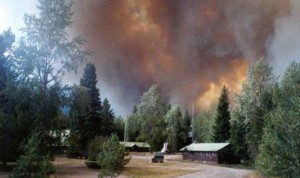 [You can download the May 1 Fire Season Outlook by clicking here (PDF format, 1.03MB).]
[You can download the May 1 Fire Season Outlook by clicking here (PDF format, 1.03MB).]
The Outlook is ominous for Northwest Montana. This is early — the June 1 and July 1 Outlooks will be much more reliable. However, it is enough to make us concerned about the fire season, more so than usual.
Time to get things squared away while we can. I’ll send the June and July Outlooks when available.
Thanks to all. Allen
2018 September/October/November National Wildland Fire Outlook
There is good news in the September/October/November National Wildland Fire Outlook that resonates with what we have seen in the North Fork. They accurately captured the season-slowing event we had on August 27 where we had widespread precip of 0.20” to 0.50” and snow on the mountains. As you all saw, that coupled with seasonal trend to shorter burning period, cooler temperatures especially overnight, and higher relative humidity recovery overnight has significantly changed fire behavior, even though we saw premature curing of grasses and shrubs (the early color change was based more on drought than photo period in my mind).
We have returned to “Normal” fire behavior forecast for Northwestern Montana for the forecast period. “The latest climate outlooks forecast the entire region to have above average temperatures and near-average precipitation for the period from September through November.” It appears that there may be a higher fire risk in Eastern Montana, but for us a return to Normal is very good. So, while it would be nice for us to see a forecast for a season-ending event in the next few weeks, in reality I think we are going to slide gradually out of fire season. I would be surprised if we see any return to significant fire indices in the Flathead. That doesn’t preclude some moderately warm temperatures and strong winds from a passing dry cold front that would cause any active fire to get up and run for a few hours with available fuels. I don’t believe we have that potential in either Whale Butte or Coal Ridge, but a new start in heavy, dry fuels could be a problem, but I think that would be a relatively uncommon event.
All in all, a good forecast for us. And we might have some good fall weather for outdoor work and burning, once we get out of fire season!
Tap below to download a copy of the September/October/November National Wildland Fire Outlook: https://www.nifc.gov/nicc/predictive/outlooks/monthly_seasonal_outlook.pdf.
Fire Training at the Hall
Great turnout for the Fire Training at the Hall last Thursday with some 25 people in attendance!
Gary Mahugh did an excellent job going over some of the fundamentals. Thanks to Dick Leigh for being the energy behind this. And thanks to Janet Leigh for the potluck pulled pork main dish!
We’ll be thinking about hosting a similar session next June, and include it on the calendar if there is interest.
